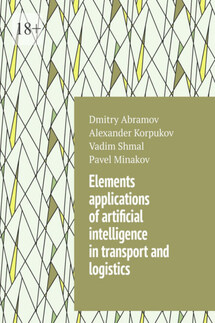Elements applications of artificial intelligence in transport and logistics - страница 2
They came to this conclusion because they saw the relationship between specific brain activity and a specific behavior or idea. In other words, if you go to the mind and see activity that looked like it came from the mind, and you saw behavior that looked like it came from the mind, then the behavior is likely to follow the behavior. And if the mind was «imprinted» on the behavior, then it had to follow the action, and not vice versa. They began to formulate a new theory about how behavior arises and how mind is formed.
Minsky explained:
«The starting point was the work we did on the correlations between brain activity and human behavior. It was very clear to us that these correlations cannot be understood without first understanding how behavior is generated.»
The authors came to the conclusion that any inorganic system can act only on the basis of its internal states. If the internal states changed, then the behavior of the system would change. When the authors thought of a brain that responds to certain types of brain waves, they noticed that the brain would produce a certain behavior, and that this behavior would correspond to the internal state of the brain. This is a universal principle of nature. Since this principle of nature made behavior universal, it should lead the authors to the conclusion that if they applied these principles to the brain, they could create a computer program that would be able to reproduce the behavior of the brain.
Minsky believed that universal principles governing biological systems could be used to create computer software. However, Minsky admitted that his ideas were «science fiction.» It took Minsky and Simon another year to find a way to create a computer that could mimic their discoveries. But by 1972, they had developed a computer program that could test their theories.
John B. Barg, professor of psychology at Yale University, was also instrumental in the development of Minsky and Simon’s research. Barg helped found the Center for Behavioral Neuroscience at the University of Michigan in 1972, where Minsky and Simon continued to experiment with human and animal behavior.
The field of artificial intelligence research began in a seminar at Dartmouth College in 1956, where the term «artificial intelligence» was first coined. The following year, in 1957, Massachusetts Institute of Technology, together with its research graduate students, formed a new organization of AI researchers called the SIGINT-A (Intelligence and Scientific Computing) Committee. After creating many of the foundations of artificial intelligence, members of this group did some research on a similar program at Stanford University. The group decided to keep the name SIGINT-A and develop a new research and development program in the field of artificial intelligence. SIGINT-A became the research and development group that eventually became the world famous artificial intelligence laboratory that now bears his name. SIGINT-A is a legendary research organization. There are many famous names in this area in its history. Many famous names in the field of AI have been taken from SIGINT-A. Many projects have been implemented in the laboratory. To meet engineering needs or to fulfill a new mission in a new era of artificial intelligence, SIGINT-A has never been afraid to try new things. And many of her ideas and directions have been accepted in the generally accepted field. Many of what we now regard as leading AI tools, such as neural networks and helper vector machines, were created or adapted in the SIGINT-A era.







